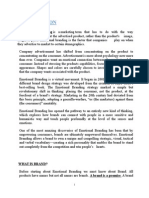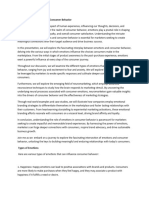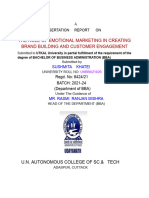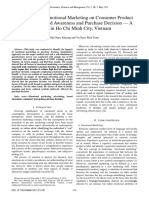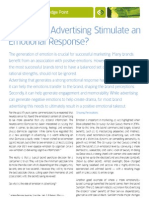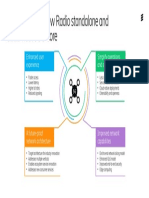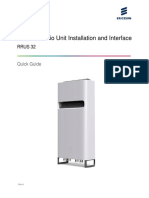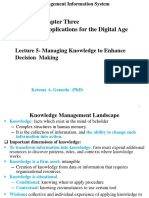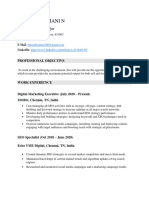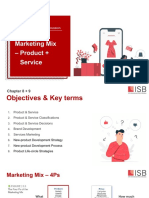0% found this document useful (0 votes)
26 views10 pagesDoes Emotions Play As Tool For Battle of Brands: Emotional Branding
The article discusses the significance of emotional branding as a strategic tool in marketing, emphasizing that emotions can create strong connections between consumers and brands. It outlines the importance of emotional appeals in advertising and how brands like Nokia have successfully leveraged emotional connections to enhance customer loyalty. The conclusion highlights that understanding and integrating emotional aspects into branding strategies is crucial for companies to drive consumer engagement and sales.
Uploaded by
lalurivaliqalpayantaCopyright
© © All Rights Reserved
We take content rights seriously. If you suspect this is your content, claim it here.
Available Formats
Download as PDF, TXT or read online on Scribd
0% found this document useful (0 votes)
26 views10 pagesDoes Emotions Play As Tool For Battle of Brands: Emotional Branding
The article discusses the significance of emotional branding as a strategic tool in marketing, emphasizing that emotions can create strong connections between consumers and brands. It outlines the importance of emotional appeals in advertising and how brands like Nokia have successfully leveraged emotional connections to enhance customer loyalty. The conclusion highlights that understanding and integrating emotional aspects into branding strategies is crucial for companies to drive consumer engagement and sales.
Uploaded by
lalurivaliqalpayantaCopyright
© © All Rights Reserved
We take content rights seriously. If you suspect this is your content, claim it here.
Available Formats
Download as PDF, TXT or read online on Scribd
/ 10





